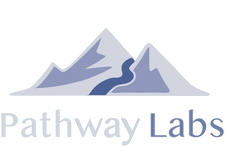In today's technologically advanced world, educational institutions are embracing digital solutions to enhance their administrative processes and improve the overall student experience. One such transformative tool is student information software (SIS).
Student information software refers to a comprehensive platform that centralizes and manages essential student data, communications, academic records, grades, administrative tasks, and more. An SIS is meant to help streamline the entirety of the student lifecycle. This post explores the significant impact a tool like an SIS can have on the student experience, focusing on key areas such as accessibility, communication, efficiency, and data management.
Accessibility
Student information software promotes accessibility by providing students with convenient access to their academic information and resources. With an SIS, student’s have access to an intuitive web-based interface. Students can log in to the software platform from any device with internet access, enabling them to check grades, view class schedules, communicate with educators, and access course materials at their convenience. This flexibility empowers students to take ownership of their education, as they can stay informed and engaged without the constraints of physical location or time restrictions.
Additionally, some student information softwares often offers multilingual support, ensuring that diverse student populations can navigate the platform comfortably. This inclusivity is crucial for fostering an equitable learning environment and meeting the needs of students from different cultural and linguistic backgrounds.
Communication
Effective communication is essential for a positive student experience, and student information software facilitates seamless communication between students, faculty, and administrative staff. The software provides a centralized platform for exchanging messages, notifications, and announcements, eliminating the reliance on scattered email chains or physical notices.
Through the software's communication features, students can receive timely updates about assignments, deadlines, campus events, and important announcements, thereby fostering a sense of community and engagement. Additionally, students are so often on their phone nowadays. It’s important to have an SIS that gives you the ability to send text and email notifications to students directly.
Moreover, student information software often supports real-time communication channels, such as chat or discussion boards, where students can collaborate with peers, seek clarification from professors, or engage in group projects. These interactive features encourage active participation and facilitate meaningful interactions, bridging the gap between students and their academic support network.
Efficiency
Streamlining administrative processes is a fundamental advantage of student information software. Tasks that were once manual and time-consuming, such as registering for classes, requesting transcripts, or tracking academic progress, can now be accomplished seamlessly through the software platform. This enhanced efficiency not only saves valuable time for both students and staff but also reduces the likelihood of errors or miscommunication that could negatively impact the student experience.
Furthermore, student information software often integrates with other educational tools, such as learning management systems, library databases, and online assessment platforms. This integration allows for a seamless flow of information, eliminating the need for students to juggle multiple platforms and logins. By consolidating resources and streamlining processes, student information software empowers students to focus more on their learning and personal growth and future career.
Data Management
The management of student data is crucial for educational institutions, and student information software plays a pivotal role in ensuring the accuracy, security, and accessibility of this information. The software automates data entry and updates, reducing the chances of human error and providing real-time access to up-to-date records. Whether it's academic performance, attendance records, or personal information, the software enables authorized personnel to retrieve and analyze data efficiently, facilitating informed decision-making.
Moreover, student information software often includes features that enable institutions to generate comprehensive reports and analytics. These reports help identify trends, track student progress, and evaluate institutional performance, ultimately leading to data-driven improvements in curriculum, teaching methodologies, and support services. By leveraging data effectively, educational institutions can better understand their students' needs and tailor their educational offerings to enhance the overall student experience.
In Conclusion
Student information software has revolutionized the way educational institutions manage student data and interact with their student community. With its emphasis on accessibility, communication, efficiency, and data management, student information software has a profound impact on the student experience.
By providing easy access to academic information, fostering seamless communication channels, streamlining administrative processes, and facilitating data-driven decision-making, this software empowers students to take ownership of their education, promotes inclusivity, and enhances the overall learning environment. As educational institutions continue to embrace technological advancements, student information software stands as a key driver of positive change in the educational landscape. If you’re wanting to improve your student experience with an SIS, click here to learn more about how MyPath can help.

